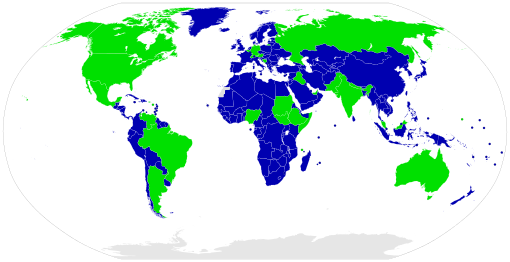Federated state facts for kids

A federated state is like a smaller, self-governing part of a bigger country called a federation. Think of it as a team: the whole country is the team, and the federated states are the players. Each player (or state) has its own job and rules, but they all work together under the main team captain (the central government).
These smaller parts can be called different names, like a province, a region, a canton, a land, or a state (like the states of the US). They are not fully independent countries because they share their main powers with the central government. This means they can't make their own international laws or act as separate countries on the world stage. The whole federation acts as one country for international matters.
Depending on how a country is set up, a federated state can have different levels of power to make its own laws, run its own courts, and manage its own area. It's a way for different regions to have their own local governments while still being part of a larger nation.
Sometimes, a federation is formed when several independent areas or dependent territories decide to join together. Other times, a country that used to be run by one central government (a unitary state) might divide itself into federated states to give more power to local areas. Once a federation is formed, the rules about how the central government and the local states share power become part of the country's main law, called its constitution.
In countries with federal systems, power is split between the main government and the smaller states. These states, provinces, or cantons are partly self-governing. They have a certain amount of freedom to make their own decisions, and this freedom is protected by the country's constitution. The amount of freedom can be very different from one federation to another. Sometimes, the main government can overrule or stop laws made by a federated state, but not always. The rules about how power is shared can be changed, but usually only through changes to the national constitution.
Federated states can have different types of government themselves. Some are like small republics, meaning people vote for their leaders. These are often called "states" (like in the US) or "republics" (like in the former USSR). Others might have a monarchical form of government, meaning they have a king or queen, or a similar ruler.
Countries with Federated States
Below are some examples of countries that are federations, showing their main self-governing parts (federated units) and sometimes other areas managed by the central government.
| Country | Main Self-Governing Parts | Other Areas |
|---|---|---|
| 23 provinces: | 1 autonomous city: | |
| 6 states: | 3 internal territories: | |
| 7 external territories: | ||
| 26 states: | 1 federal district: | |
| 10 provinces: | 3 territories: | |
| 16 states: | ||
| 28 states: | 8 union territories: | |
46 oblasts:
|
||
| 21 republics: | ||
9 krais:
|
||
| 4 autonomous okrugs: | ||
| 2 federal cities: | ||
1 autonomous oblast:
|
||
| 50 states: | 1 federal district: | |
| 1 incorporated territory: | ||
| 13 unincorporated territories: |
See also
 In Spanish: Estado (entidad subnacional) para niños
In Spanish: Estado (entidad subnacional) para niños
- Associated state
- Federal district
- Federal territory
- Federation
- List of administrative divisions by country
- List of autonomous areas by country
- List of sovereign states
- Supranational union
- -stan

